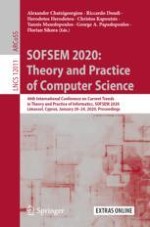2020 | OriginalPaper | Buchkapitel
Burning Two Worlds
Algorithms for Burning Dense and Tree-Like Graphs
verfasst von : Shahin Kamali, Avery Miller, Kenny Zhang
Erschienen in: SOFSEM 2020: Theory and Practice of Computer Science
Aktivieren Sie unsere intelligente Suche, um passende Fachinhalte oder Patente zu finden.
Wählen Sie Textabschnitte aus um mit Künstlicher Intelligenz passenden Patente zu finden. powered by
Markieren Sie Textabschnitte, um KI-gestützt weitere passende Inhalte zu finden. powered by
